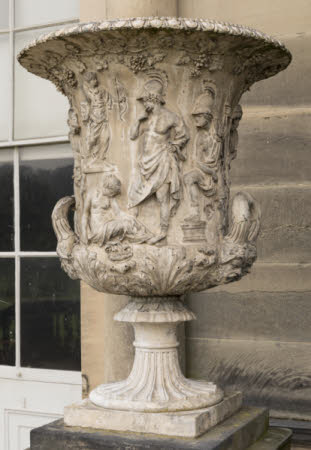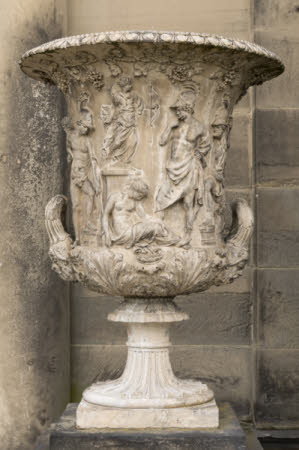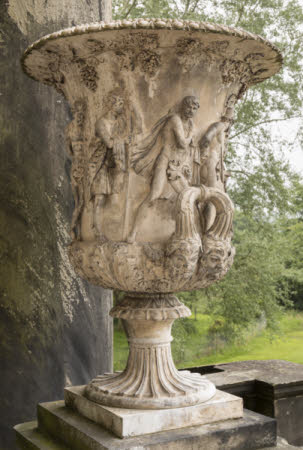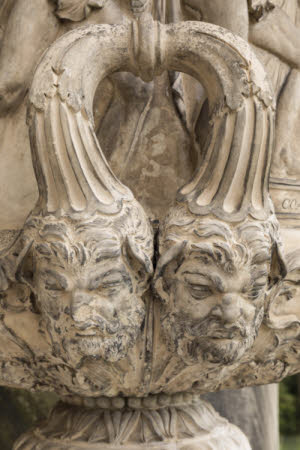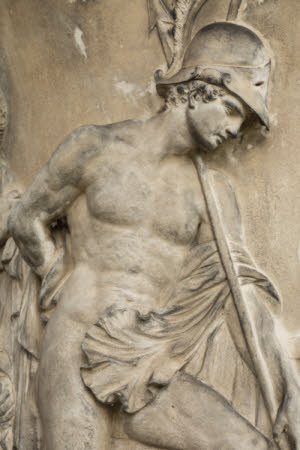The Medici Vase
Coade
Category
Art / Sculpture
Date
circa 1771
Materials
Coade stone on sandstone plinth
Measurements
1240 mm (H); 1180 mm (H); 760 mm (W); 900 mm (D); 760 mm (D)
Place of origin
Lambeth
Order this imageCollection
Kedleston Hall, Derbyshire
NT 109017.2
Summary
Coade stone, the Medici Vase, Coade's Artificial Stone Manufactory, after the antique, c. 1771. One of a pair of artificial (Coade) stone reproductions of the Borghese (NT 109017.1) and Medici Vases, produced by Coade's Artificial Stone Manufactory, after the antique. A bell-shaped krater with gadrooned everted lip, moulded with bas-reliefs of a vine motif and frieze believed to show the story of Iphigenia. The lower section is moulded with spreading acanthus leaves and two fluted loop handles rising from paired satyrs’ heads on either sides. The vase is mounted on a tapering fluted stem and a square plinth. Inscribed 'COADE, LONDON. | Fecit' on the step supporting the foot of the helmeted warrior to the left of reclining Iphigenia. Mounted on sandstone plinths. The antique Borghese and Medici Vases are monumental bell-shaped krater sculpted from Pentellic marble in Athens in the second half of the 1st century BC. They are housed in the Louvre, Paris, and the Uffizi, Florence (respectively). For a detailed discussion of each vase see Haskell and Penny 1981, pp. 315-6, nos. 81-2.
Credit line
Kedleston Hall, The Scarsdale Collection (acquired with the help of the National Heritage Memorial Fund and transferred to The National Trust in 1987)
Marks and inscriptions
On frieze, on step below foot of warrior, left of Iphigenia : COADE, LONDON. | Fecit
Makers and roles
Coade, manufacturer
References
Haskell and Penny 1981: Francis Haskell and Nicholas Penny, Taste and the Antique, The Lure of Classical Sculpture 1500 - 1900, New Haven and London, 1981, p. 316, no. 82. Gunnis 1968: Rupert Gunnis, Dictionary of British Sculptors 1660-1851, London 1968, p. 304. Kelly 1990: Alison Kelly, Mrs Coade's stone, Upton-upon-Severn 1990, pp. 33, 37-8, 41, 169, 189, 200. Valpy 1986: Nancy Valpy, ‘Advertisements for Artificial Stone in the Daily Advertiser’, English Ceramic Circle Transactions, vol. 12, no. 3 (1986) pp. 206-226, pp. 209-216, 220-22.

